There are two main types of backflow: backpressure backflow, caused by downstream pressure exceeding supply pressure, and back siphonage, caused by negative or reduced pressure in the supply. Overlooking backflow prevention can lead to dire consequences, from public health disasters to financial repercussions.
Installing a backflow prevention device, also known as a backflow valve or backflow preventer, can significantly reduce the risk of water contamination resulting from variations in pressure. These devices are installed by certified technicians to regulate water flow, preventing water from entering pipes where it should not be and is tested annually.
Neglecting backflow prevention can pose serious risks for businesses. Firstly, it exposes customers and employees to potential health hazards due to contaminated water, leading to waterborne illnesses and potential legal liabilities. Failure to comply with backflow prevention regulations can also result in legal violations, fines, and lawsuits, damaging the business’s reputation and finances. Additionally, backflow incidents can disrupt business operations by causing water supply interruptions, plumbing system damage, and the need for emergency repairs, resulting in downtime and financial losses. Lastly, dealing with the aftermath of backflow incidents incurs significant financial costs, including legal fees, fines, repair expenses, and loss of business revenue. Therefore, it is imperative for businesses to prioritize backflow prevention to mitigate these risks and safeguard their operations, reputation, and financial well-being.
In an era when brand image and trust are paramount, any negligence can have long-lasting consequences. A company’s reputation can be irreparably damaged, and rebuilding trust becomes a challenging endeavor. To address and prevent backflow incidents, there are stringent regulations at the local, state, and national levels. While federal guidelines emphasize the importance of backflow prevention, specific regulations, and enforcement typically fall under local or state jurisdictions. Always check local codes for precise requirements.
Proactive measures such as regular testing, maintenance, and proper documentation can help businesses stay ahead of compliance and ensure the ongoing safety of their water supply.









